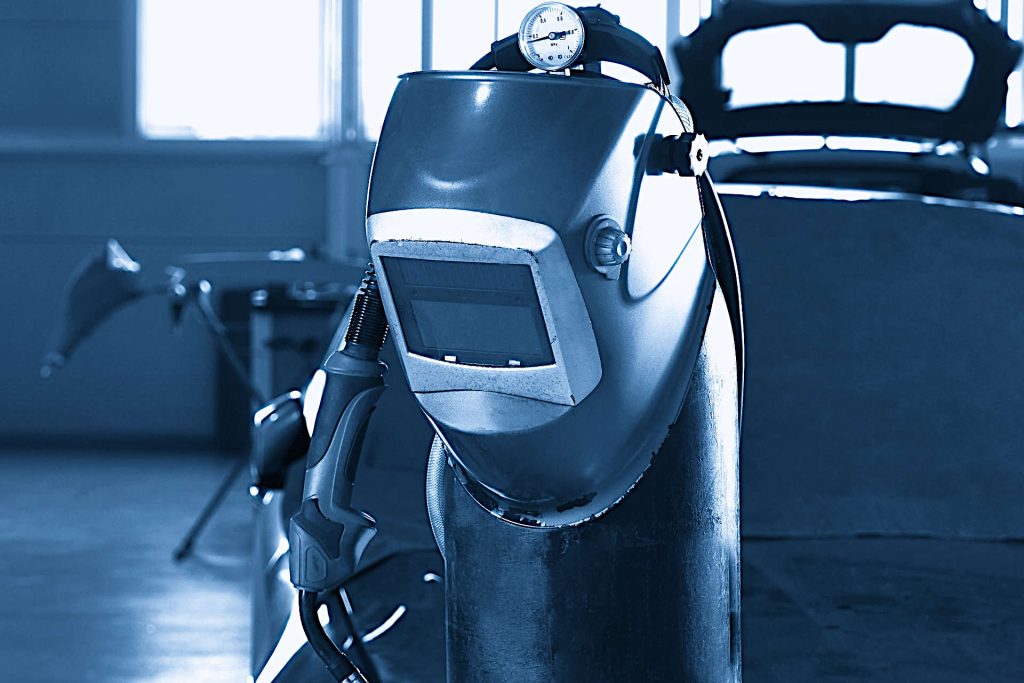How to Weld Without Gas
Learning how to weld without gas can be crucial for many welding tasks as the use of gas can be impractical or impossible in certain situations. This is particularly true when you have to weld outside the comfort of your workshop. Welding is an essential process in metal fabrication, construction, and maintenance industries. However, the traditional welding process requires a shielding gas to protect the weld pool from atmospheric contamination.
While shielding gas is effective in achieving a high-quality weld, there are situations where welding without gas becomes necessary. One common reason for welding without gas is the lack of a gas supply. In remote areas or outdoor environments, it may be challenging to transport and store gas cylinders. Additionally, welding without gas may be necessary in situations where there is no proper ventilation, as the accumulation of shielding gas can be hazardous to the welder and others in the vicinity.
Another reason for welding without gas is the need to weld thicker materials. Gas-shielded welding methods may not penetrate thick materials effectively, leading to a weak weld. Welding without gas can provide greater penetration and stronger welds on thicker materials.
Various Gasless Methods of Welding

There are several different ways in which you can weld without gas. some methods are better than others and the choice you make is likely to depend on equipment to hand and the nature of the weld.
| Method | Description |
|---|---|
| Stick Welding (SMAW) | Uses a consumable electrode coated in flux to melt and form a gas shield around the weld pool. The flux also acts as a deoxidizer, removing impurities from the weld pool. Can be used on various materials and is relatively inexpensive. |
| Flux-Cored Arc Welding (FCAW) | Uses a continuous wire electrode with a flux core that melts and forms a gas shield around the weld pool. Produces less spatter than stick welding and can achieve high-quality welds on thicker materials. Can be self-shielded or gas-shielded. |
| MIG Flux-Cored Welding | A hybrid of traditional MIG welding and FCAW that uses a continuously fed wire electrode with a flux core to melt and form a gas shield around the weld pool. Ideal for outdoor environments where shielding gas may not be practical. Can achieve high-quality welds on thicker materials. |
| TIG Flux-Cored Welding | A new technology that combines the precision of TIG welding with the benefits of flux-cored arc welding. Uses a continuously fed wire electrode with a flux core to melt and form a gas shield around the weld pool. Ideal for applications that require precise control and minimal spatter. Can achieve high-quality welds on thinner materials. |
Stick Welding
One of the most popular methods of welding without gas is stick welding, also known as Shielded Metal Arc Welding (SMAW). Stick welding uses a consumable electrode coated in flux, which melts and forms a gas shield around the weld pool. The flux also acts as a deoxidizer, removing impurities from the weld pool.
Stick welding gasless welding is versatile and can be used on various materials, including mild steel, stainless steel, and cast iron. It is also relatively inexpensive, making it an attractive option for small-scale projects. However, stick welding produces a lot of spatter, which can be difficult to clean up.
Flux-Cored Arc Welding
Flux-Cored Arc Welding (FCAW) is another popular method of welding without gas. FCAW uses a continuous wire electrode with a flux core that melts and forms a gas shield around the weld pool. FCAW produces less spatter than stick welding and can achieve high-quality welds on thicker materials.
There are two types of FCAW: self-shielded and gas-shielded. Self-shielded FCAW uses a flux core that provides its shielding gas, while gas-shielded FCAW uses an external shielding gas. Self-shielded FCAW is ideal for outdoor environments, while gas-shielded FCAW is better suited for indoor environments.
MIG Flux-Cored Method
MIG flux-cored welding is a hybrid of traditional MIG welding and FCAW. It uses a continuously fed wire electrode with a flux core that melts and forms a gas shield around the weld pool. MIG flux-cored welding can achieve high-quality welds on thicker materials and is ideal for outdoor environments where shielding gas may not be practical.
TIG Flux-Cored Method
TIG flux-cored welding is a relatively new welding method that combines the precision of TIG welding with the benefits of flux-cored arc welding. TIG flux-cored welding uses a continuously fed wire electrode with a flux core that melts and forms a gas shield around the weld pool. This method can achieve high-quality welds on thinner materials and is ideal for applications that require precise control and minimal spatter.
Main Points
Welding without gas is a practical solution in situations where traditional welding methods may not be feasible. Stick welding, flux-cored arc welding, and MIG flux-cored welding are all effective methods for welding without gas, with each method having its advantages and disadvantages. Choosing the right welding method depends on the specific application, material thickness, and environment.
Further Reading
If you want to look at the process of how to weld without gas in more detail then you can read some of our more in depth articles that look at the various different options for gasless welding that are available: